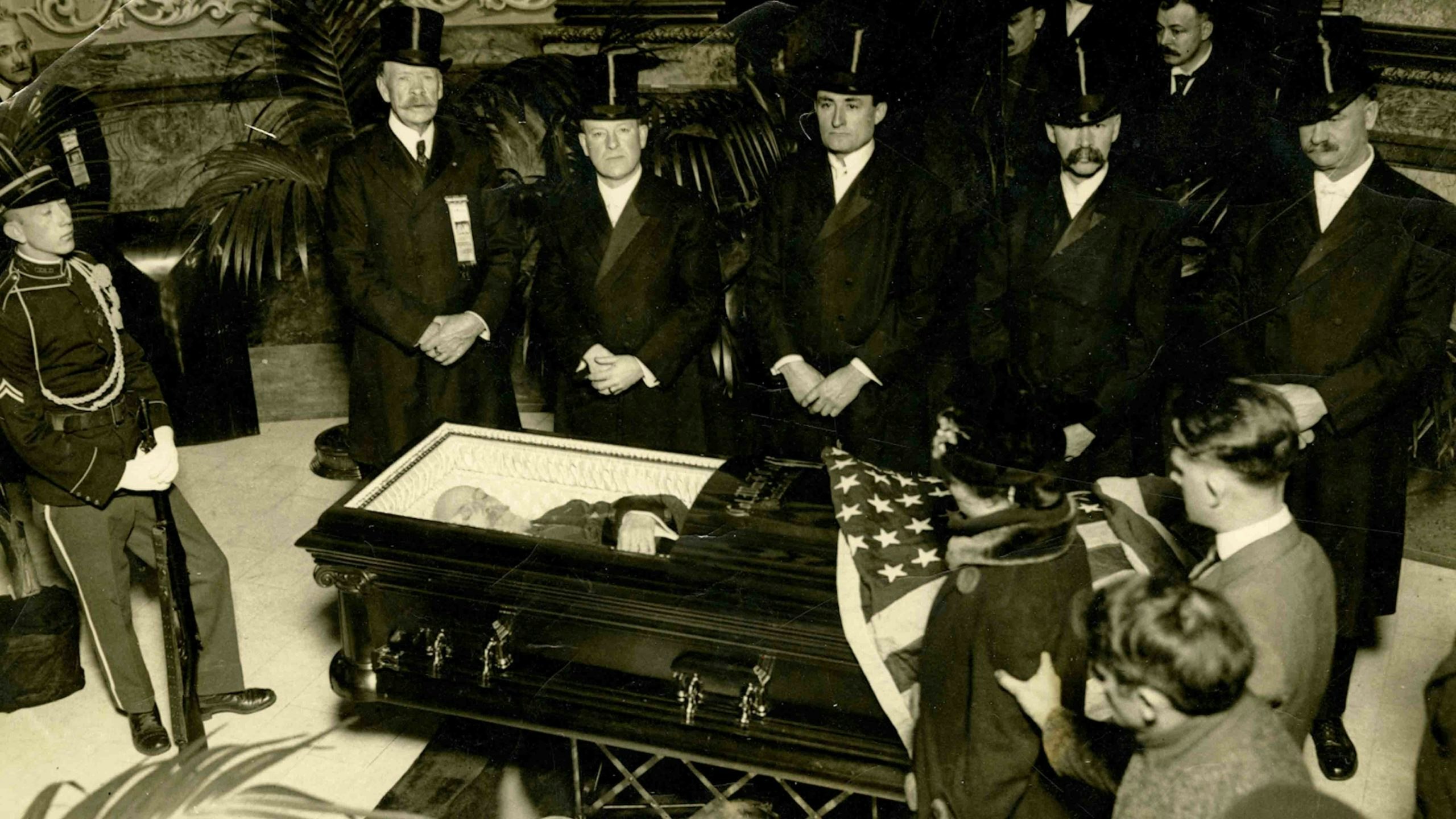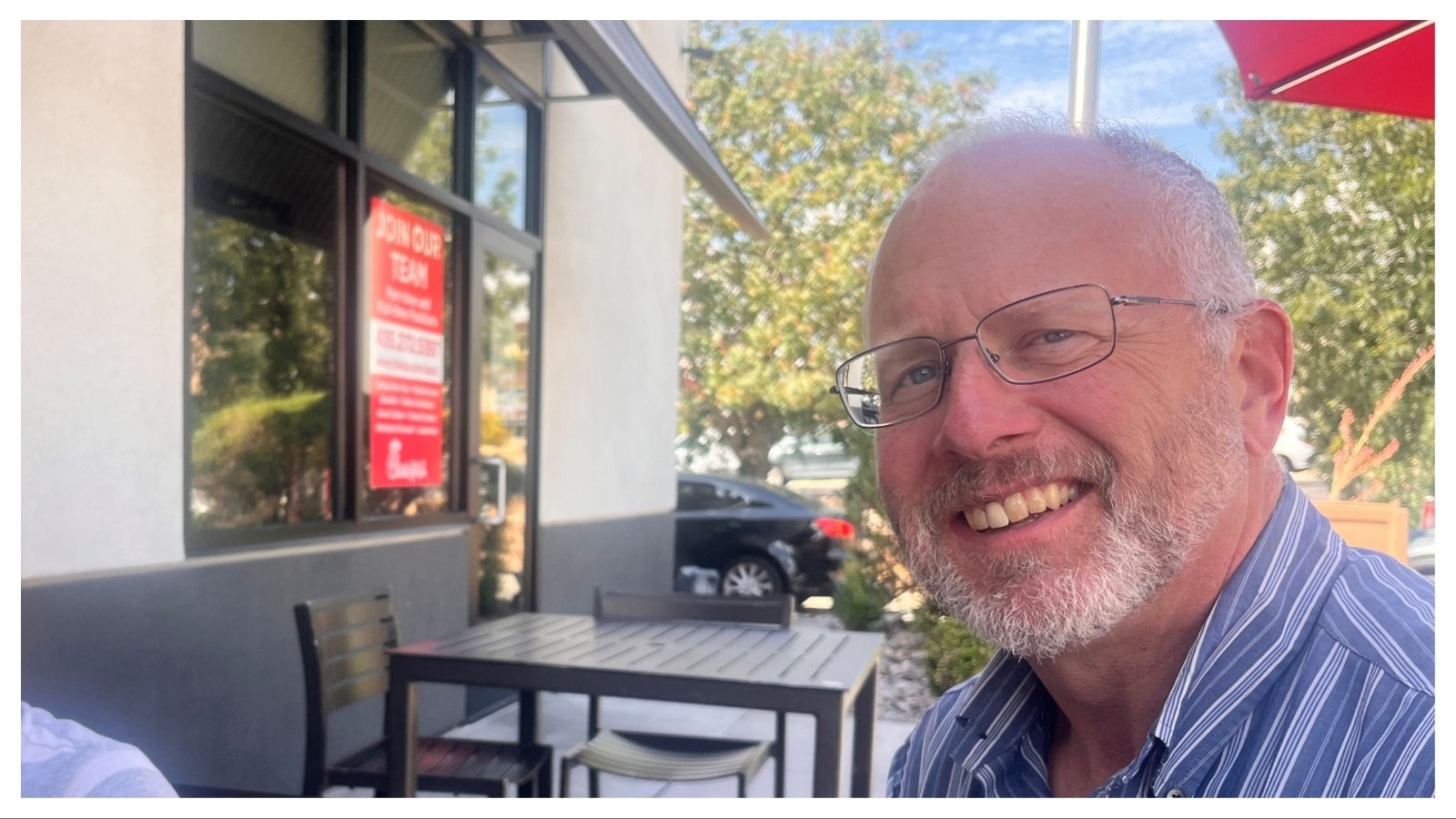He was, without question, the most famous man of his day. Col. William F. Cody, better known to the world as “Buffalo Bill,” brought the mystique and adventure of the Wild West to everyday people around the globe in the decades surrounding the turn of the 20th century.
But the community of Cody, his favorite part of the world, the town that bears his name, the place in which his 1906 will directed that he be buried — was not his final resting place.
Or was it?
Bob Richard is an author and historian from Cody. Last week, Richard presented a theory at the Buffalo Bill Center of the West that perhaps Buffalo Bill isn’t really buried on Lookout Mountain in Colorado.
Instead he theorized, the western showman’s body may have been stolen by Richard’s grandfather and two accomplices as part of a bold plot to bury Bill’s body where he wished – at the top of Cedar Mountain overlooking the town he founded.
Worldwide Fame
William Cody was many things in his storied life – as a young man, he rode for the Pony Express; he was an Indian scout and buffalo hunter for the railroad (hence his nickname, “Buffalo Bill”) who was awarded the Congressional Medal of Honor.
Cody rose to worldwide fame as the star of thousands of dime novels romanticizing his exploits in the Wild West. He capitalized on that fame when he created “Buffalo Bill’s Wild West Show,” which toured across the United States and in Europe in the late 1800s and early 1900s.
And although he made a tidy sum of money with his Wild West Show entertaining celebrities such as Queen Victoria of England and appearing at venues such as the World’s Fair in Chicago in 1893, Cody’s investments and spending habits soon ate through his savings.
“Buffalo Bill is in his prime in the late 1880s and 90s,” said Margie Johnson, who with her husband Mike has researched Cody’s history extensively. “He’s traveling the world, he’s promoted by the papers of the day, he’s going to country after country after country. He’s raking in the money.”
Because he now had the ability to finance large projects, Cody, by the early 1900s, had thrown himself into a grand venture – creating the community that bears his name near the east entrance to Yellowstone National Park. He and his partners formed the Shoshone Land and Irrigation Company, acquiring water rights from the Shoshone River to irrigate 60,000 acres.
Cody’s vision included the construction of the 325-foot-high Buffalo Bill Dam, one of the first concrete arch dams built in the United States and the highest dam in the world at the time of its completion in 1910.
Cody’s Will
It was during this time that Cody recorded his first will, written in 1906, which explicitly laid out instructions as to where he wished to be buried.

“It is my wish and I hereby direct that my body shall be buried in some suitable plot of ground on Cedar Mountain,” the will read, “overlooking the town of Cody, Wyoming, in order that my mortal remains shall lie in close proximity to that fair section of my native Country which bears my name, and in the growth and development of which I have taken so deep and loving an interest, and to which wheresoever and to whatever parts of the earth I have wandered I have always longed to return.”
“In (1906), he’s flush. He’s happy,” said Margie, “but he’s miserable with (wife) Louisa. He tries to get divorce and she won’t have it… but he makes his will at some time in that year.”
Cody and his wife had had a contentious relationship for most of their married lives. Cody’s 1906 will bequeathed Louisa with very little of his vast land holdings.
However, money became seriously tight between 1910 and 1917, according to Richard, who said Cody made a fateful decision to take a loan out from the owners of the Denver Post, Harry Tammen and Frederick Bonfils.
“In (1912), he borrowed the money, it was $20,000 from Tammen and (Bonfills),” said Mike Johnson. “He couldn’t pay it back, and went to work for them on other shows.”
“He had a lot of property, but he was cash poor,” said Margie. “The Denver Post people were holding him in servitude. He was broke, and he went to them and borrowed money from them – I think it was $10,000 – to put the Wild West Show into storage, and he couldn’t pay it. So basically they made him work for them in substandard productions just to pay off that, and he was embarrassed.”
The Truce
It was during this period that Cody and his wife apparently called a truce, according to the Johnsons.
“He changed his will in (1913) and he and Louisa apparently reconciled,” Mike said. “So now she’s in charge. She gets everything.”
When Cody fell seriously ill at the end of 1917, his finances were in disarray. And while a guest at his sister’s house in Denver, Colorado, the showman passed away on Dec. 10, 1917.
“He was laid in-state both at the (Denver) Elks club and the Capitol,” said Richard. “And 25,000 people attended his being in-state at one place or the other.”
Because of Cody’s financial debts, despite his express wishes to be buried on Cedar Mountain overlooking his town in the Rockies, Louisa was convinced by Cody’s debtors, Denver Post owners Tammen and Bonfils, to allow Cody to be buried near Denver instead.
“The mayor and the owners of the Denver Post met with Louisa, but she turned them down and said ‘No, he’s not for sale,’” Richard said. “And they said, ‘We want to take you to breakfast and talk about it and see if we can work out a deal.’”
By the end of breakfast, Louisa had changed her mind.
“‘(We’ll give you) $20,000 if we can have his body, and find a place, and have a proper burial here,’” is how Richard said the conversation went. “She says, ‘He’s all yours,’ and took the money and put it in her big bag. And then they hurried her very quickly to the Union Station and got her on the train, and she came back to Cody.”
Richard said that sum of money would have allowed Louisa to pay her husband’s bills and meet the obligations that he had been committed to.
But that’s where the official record ends – and the legend begins.

Rubber Bag Full Of Ice
Richard said the following tale was told to him by John Vogel, Ned Frost and his grandfather, from the time he was a young boy:
“John Vogel, the undertaker in Cody had a rancher south of Cody bring in a ranch hand that had died, and this was in late January,” Richard said. “And John proceeded to look at the cadaver, and he went and got some scissors and trimmed up his beard and his mustache, and went over to his phone, and he called Fred Richard (Bob’s grandfather) and Ned Frost (Fred’s brother in law, both were friends of Bill Cody’s). He says, ‘Boys, we’re going to Denver, we’re going to trade bodies. I’ve got a cadaver here, and I think we can pass him off for Bill.’”
So, Richard said, the three came into town that night and left early the next morning, putting the cowboy in a rubber bag full of ice in the back of a Packard for the two-day trip to Denver.
“When they got there, they went directly to the mortuary and met with Ohlinger (the mortician) because Vogel knew him,” Richard said. “Then they said ‘We’d like to see Bill,’ and he said, ‘Sure, we’ve got him down under the stairs because that’s the coolest place.’ And when the men went down, Fred, Ned and Vogel pulled Bill out and looked in, and said ‘Yep, sure enough, that’s Bill.’”
Richard said that after dinner that night, the three men went back to the mortuary, went down the steps, and exchanged the bodies.
“They carried Bill up, put him in the iced rubber bag back in the car, and they were gassed up and headed out of town,” Richard said.
He explained that when the men arrived back in Cody, they transported the body to an undisclosed location at the top of Cedar Mountain, where they buried their friend.
Could The Switch Have Happened?
In all the years Richard has relayed this tale, questions inevitably arise. Could the switch have happened? Wouldn’t anyone have noticed that the body in the Denver mortuary did not look exactly like the man who was possibly the most recognizable person in the world?
“It could have been done,” said Mike Johnson, who several years ago walked through the mortuary, which still exists as it did in 1917. “The crypt room was big enough to pull the casket out, take the body out, change clothing, change bodies, do it all in the crypt room, slide the wrong guy back in the casket and take the rubber bag out the door. So the answer is yes. It could have happened.”
The official record, though, is that Buffalo Bill Cody is buried on Lookout Mountain near Golden, Colorado. Bill’s foster son, Johnny Baker, oversaw the formation of a visitor’s center at the site of Cody’s memorial, which still stands today.
But the Johnsons, who have kept the legend of Bill’s burial alive through the business they founded in the early 2000s, Cody Trolley Tours, would like to see the showman’s 1906 will fulfilled. Even if Cody’s body really is buried on Lookout Mountain, the Johnsons said the townspeople of the community that bears his name could honor the 1906 request of the man whose larger-than-life presence is still felt today.
“I further direct that there shall be erected over my grave, to mark the spot where my body lies, a monument wrought from native Red stone in the form of a mammoth Buffalo,” Cody’s 1906 will read, “and placed in such a position as to be visible from the town, in order that it may be a constant reminder to my fellow citizens that it was the great wish of its founder that Cody should not only grow in prosperity and become a populous and influential metropolis, but that it should be distinguished for the purity of its government and the loyalty of its citizens to the institution of our beloved Country.”
“The whole town is built on his back,” said Mike Johnson. “But (the monument) never happened. And it shouldn’t be a difficult thing, it’s an issue of engineering. It’s windy up there. But once it’s engineered, it’s just a matter of money. It should really be somebody just taking charge of it.”
There is a fiberglass statue of a buffalo on top of Cedar Mountain, which was given to the community by the city of Golden, Colorado, where Buffalo Bill is officially said to be buried, as a sort of peace offering in the tug-of-war between the two cities.
Even without the buffalo statue Cody requested in his 1906 will, the city of Cody has definitely paid tribute to its founder.
Gertrude Vanderbilt Whitney’s bronze statue “The Scout” features prominently at the west end of Cody’s main street, Sheridan Avenue. Cody’s likeness can be found on business signs; the famous Buffalo Bill Center of the West is the town’s primary tourist attraction, where visitors can find out more about Cody’s legacy.
“His spirit is in this town,” said Margie Johnson. “The creativity. Look what Buffalo Bill did with his life.”





